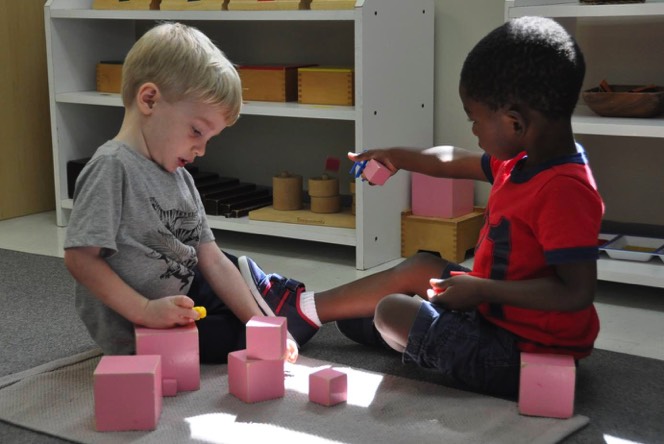LOADING
Pre-Primary
Environment Designed to Encourage!
Abner Montessori School's Pre-Primary program offers two-year old children a wonderful environment designed to encourage their investigative nature with opportunities to explore, move, and manipulate materials with purposeful intent. In the past, it was thought that the most important years of a child's life were the years of high school through college. However, research has clearly demonstrated that, in fact, the first six years of life are the most important years for a child's educational and emotional development.

Equally important, research has also demonstrated that although the brain is not a muscle, it only develops through active use. This is especially true in the years of infancy and early childhood. Unlike the "blank slate" theory, Maria Montessori demonstrated that the young child's mind is more like that of an acute observer, or scientist - eager to learn, explore, try new things, and master new skills. An early childhood program that supports this inquisitive period by providing intellectual, physical and sensory stimulation will increase the child's ability to concentrate, absorb, and master new ideas and skills, often with dramatic results.

The early childhood period is one of great sensitivity to language, spatial relationships, music, art, social graces, and so much more. Montessori recognized that when a child's mind is exposed to a rich and stimulating environment during this period, the brain will develop a much stronger and lasting ability to learn and accomplish.
Offering Opportunity for Exploration!
Abner Montessori's Pre-Primary program offers lots of opportunity for exploration and learning in the tradition of Maria Montessori. Language, sensory training, math, practical life, and art areas provide space and materials with intentional lesson design.
Practical Life

Lessons emphasize the development of skills such as control of movement, care of the person and care of the environment. Parents visiting the classroom will see children involved in practical life activities such as pouring or scooping, transferring work, stringing beads, folding napkins, washing, sweeping or mopping.
Sensorial

Sensorial activities challenge the younger child to match objects by size, shape, color or to solve simple puzzles. Children also enjoy sensorial exploration of water, sand, dirt, clay, textured objects, the smell of flowers and food, discriminating size, color, and sound.
Language

Language development explodes at this age, particularly in spoken language. We provide language materials such as books, objects and pictures for naming, matching, and sequencing. Letter recognition activities and beginning phonics are also introduced.
Math

Math lessons include number recognition activities, stacking and nesting cubes, number blocks and puzzles as well as sorting and counting materials.
Art

Art activities allow toddlers to enjoy basic creative work such as cutting paper, gluing, coloring with chalk and crayons, and painting. Music is integrated throughout the program with group songs, songs with movement, and background music.




